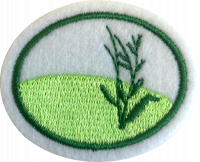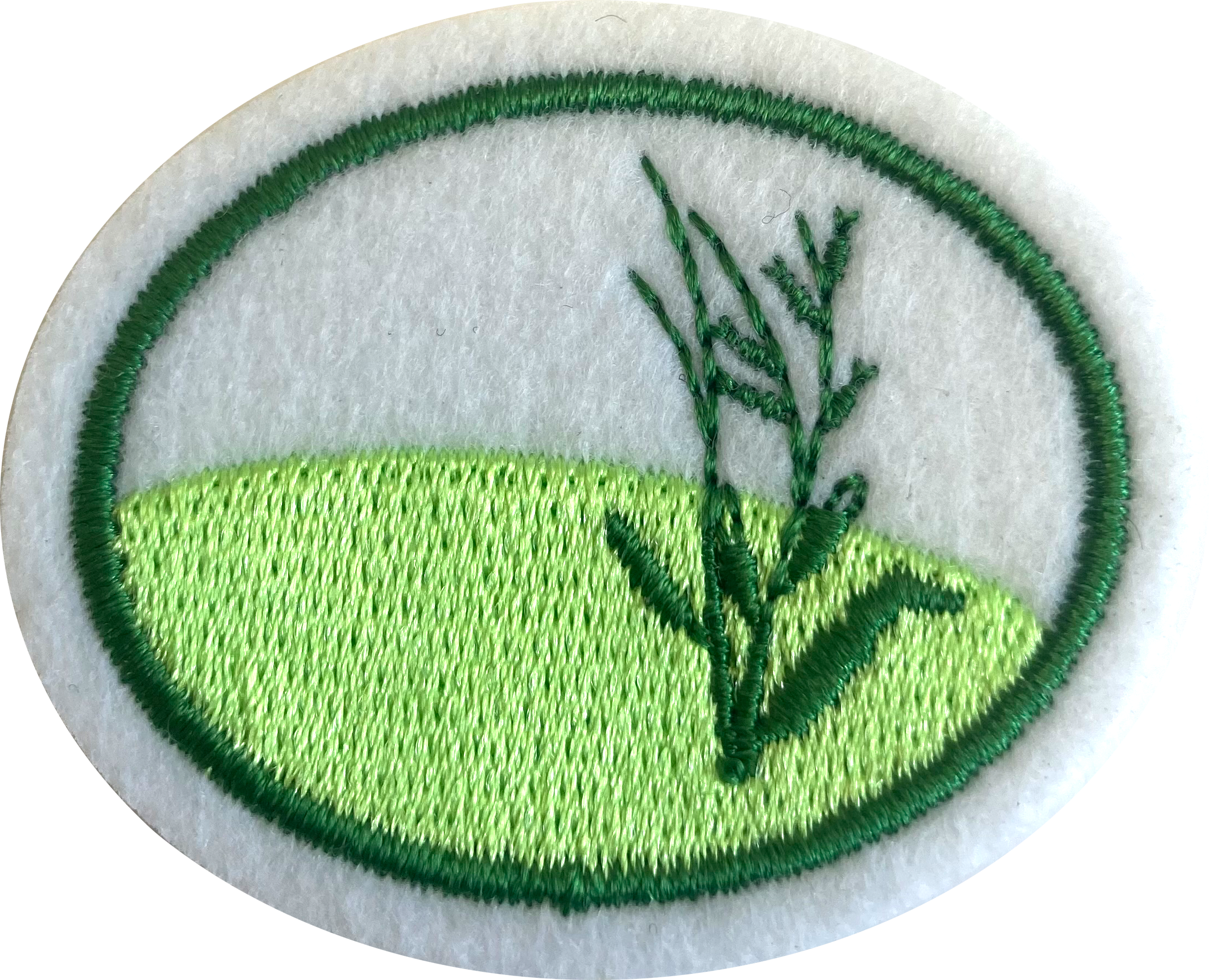AY Honor Temperate Grasslands Answer Key
Skill Level
1
Year
2023
Version
03.12.2025
Approval authority
North American Division
1
As the name implies, a grassland is a terrestrial biome where grasses (poaceae) are the dominant vegetation. While there is no agreed upon measurement, grasslands generally have less than 10-40% tree and shrub cover. Some definitions consider a grassland with less than 10-20% tree/shrub cover a prairie, while those with 20-40% tree/shrub cover would be a savanna. Grasslands are also often characterized by relatively low rainfall and seasonal fires.
1a
Grasslands can be found in temperate and tropical environments on all continents aside from Antarctica, usually as an intermediate zone between deserts and woodlands or forests. Large grasslands include the Shortgrass and Tallgrass prairies of North America, the steppes of Eurasia, the Puszta of Hungary, the Veldt of South Africa, and the Pampas of South America, as well as the tropical Savannas of Africa and India.
1b
A grassland needs sufficient water for the grasses and small plants to grow, but not enough water to support larger vegetation like shrubs and trees. Grasslands also frequently need either regular grazing or cyclical fires to suppress the growth of larger shrubs and plants.
1c
Grasslands are areas of high biodiversity, capture and store large amounts of carbon, provide areas of food, agriculture, and recreation, and assist in erosion control. By some accounts, a 100 acre grassland may have as many as 200 native species of plants, demonstrating their rich biodiversity.
1d
There are several ways to describe different grasslands.
Tropical grasslands include the vast African savannas, the smaller Indian savannas and Australian semi-arid grasslands. Like all grasslands, tropical grasslands are characterized by particular dominant grasses, but tropical grasslands also rarely or never experience frost, and often have distinct wet and dry seasons and nearly annual cycles of fire.
Temperate grasslands include the prairies of North America, the short grass steppes of Eurasia, the humid pampas of South America, the South African veldt, and the Hungarian pustza. Temperate grasslands endure hot summers and cold winters, both of which can stress plant (and animal) life. They usually receive 10-30 inches of rain a year, and fires, while an important part of the temperate grassland biome, are not as pronounced as in the tropical grasslands. Temperate grasslands often have very rich soil due to centuries of decaying plant matter.
In North America, there are the shortgrass prairies further west (with lower rainfall) and the tall grass prairies further east. Between the two are the mixed grass prairies, with the line between the three shifting depending upon weather and climate over the years. Shortgrass prairies are dominated by buffalograss (Buchloe dactyloides) and blue grama (Bouteloua gracilis), while tallgrass prairies are dominated by big bluestem (Andropogon gerardii), switchgrass (Panicum virgatum), indiangrass (Sorghastrum nutans), and little bluestem (Shizachyrium scoparium).
Other ways of dividing grasslands into differing ecosystems focus on rainfall, ground cover, and the amount of taller shrubs and trees. For example, glades and barrens are rocky grasslands, with incomplete ground cover, on arid, poor soils. Sand barrens are grasslands in poor sandy soil. Meadows are grasslands near streams and ponds, with ample water, while bogs and fens are at times considered part of grasslands, despite the limited grass present.
2
Poaceae (the grass family) - Wind-pollinated monocots that can grow from the base, rather than the tip, allowing continued growth after grazing or mowing.
In Texas, the key wild grasses are Big Bluestem, Little Bluestem, Indian Grass, Switch Grass, Sideoats Gram, and Buffalo Grass.
Apocynaceae (the dogbane family) - Plants in the dogbane family are characterized by flowers with five united petals and five united sepals. Within this large family are the milkweeds, common plants of southwestern grasslands, and critical plants for migrating Monarch butterflies.
In Texas, some common grassland members of the dogbane family include Antelophorns, Broadleaf Milkweed, Plains Milkweed, Butterflyweed, and Texas Bluestar
Asteraceae (the sunflower family) - Dicot plants with composite flowers made up of ray and disc flowers.
Common composite in Texas prairies include Coreopsis, Indian Blanket (or Firewheel), Texas Star, Mexican Hat, and Black-Eyed Susan.
Fabaceae (the pea/legume family) - The flowers are often bilaterally symmetrical (zygomorphic), with uneven sized petals, though in some species flowers may be radially symmetrical. Leaves are often compound.
Common legumes of Texas prairies include the state flower the Texas Bluebonnet, Partridge Pea, Plains Wild Indigo, Wooly Locoweed, and Golden Dalea.
Lamiaceae (the mint family) - The Lamiaceae have squared (four-sided) stems, with flowers usually in whorls.
Common members of the mint family in the Texas prairies include Purple Horsemint, Mealy Blue Sage, Skullcap, Henbit, and Lemon Beebalm.
Solanaceae (the nightshade family) - The nightshades are characterized by flowers with five fused petals and a berry-like fruit. Nightshades are often toxic, though their edible members include tomatoes, potatoes, and eggplants.
Texas prairies often include Silver-Leaf Nightshade and the Purple Ground Cherry.
Verbenaceae (the vervain family) - Members of the vervain family frequently have squared stems (similar to their relative the Lamiaceae), with clusters or spikes of multiple small flowers.
In Texas prairies, examples often include Prairie Verbena, Texas Vervain, Texas Frogfruit (usually in moister areas), and Texas Lantana (a flowering shrub).
3
4
Temperate grassland are divided into two broad groups based on the average height of the grass. Shortgrass prairies usually receive lower amounts of rainfall, and are dominated by grasses that rarely reach much about 10 inches in height (ie Buffalograss and and Blue Grama). Tallgrass prairies receive more rainfall, with grasses that may reach 6 to 8 feet in height or more, including Big Bluestem, Little Bluestem, Yellow Indiangrass and .Switchgrass. In North America, the shortgrass prairies are usually further west that the tallgrass prairies, with a band of mixed grass prairies intermediate between the two.
Another bilateral categorization of temperate grasslands is based on the percent of shrub and see cover - prairies have less than 10-20 percent tree cover, savannas have 20-40 percent tree cover. (This is an alternate use of the term savanna, which also often refers to tropical grasslands). A prairie can evolve into savanna if there is insufficient grazing or fire, or an increase in available water. A savanna that does not have sufficient fire or grazing can evolve into a woodland or forest. A major fire can so damage a forest that it reverts back to a prairie, and significant fire, drought, or new grazers can see a savanna turned back into a prairie. These processes are referred to as ecological succession, where one ecosystem changes into another due to altered circumstances or natural processes.
5
The main reasons trees do not grow in grasslands are low rainfall and physical stress, such as grazing and seasonal fires. Shrubs and trees will frequently encroach upon prairies when fires are suppressed or grazers are removed.
6
6a
6b
6c
6d
7
Much of a grass plant is in the underground roots and rhizomes, and as these decay, they release nutrients into the soil. Temperate grassland soils are also enriched by the annual cycle of dying grass leaves and stems, and by nutrients from the waste of animals that graze on grassland plants. Seasonal fires also rapidly replenish nutrients by quickly breaking down dead grasses and other plants.
8
8a
8b
8c
8d
8e
9
Grasslands are important storehouses of biodiversity, clean and store water, clean air, sequester carbon, and serve as food for humans and animals, including key pollinators. Restoring and protecting grasslands can help provide clean water and air, secure soil from erosion, and ensure survival of pollinators and migratory birds.
Grasslands can be set aside as preserves, restored to native species, and managed through controlled burns and controlled access. You can take steps to protect and preserve smaller plots of grasslands by changing some areas in your yard or neighborhood to native grasses and wildflowers, reducing the use of yard chemicals, and learning more about and sharing with others the importance of grasslands.
10
10a
10b
10c
10d
11


